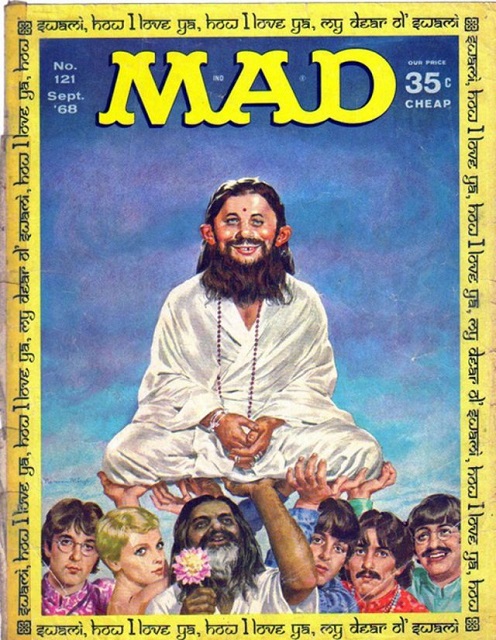
A couple of years ago I started doing some work with a dear friend who dubbed me, “The Wellness Guru,” on her site.
And there it was—the word I have always had resistance to.
Whilst I know she meant it only in a playful and possibly comedic way there was something about that title that pushed my buttons—something I wasn’t able to avoid with a laugh. At the time I hadn’t given it too much thought, but I knew deep down that, while I was okay with the wellness part, I didn’t want to be called a guru.
Whenever I feel that sense of resistance creeping in I just know it’s worth a little curiosity, a little exploration…
For me (and many other people I know), this word conjures up all sorts of uncomfortable connotations and imagery. There are countless examples—modern and ancient—of gurus falling from grace. Some spectacularly and publicly, some (I suspect many more than you would imagine) silently and shamefully—affecting only their directly associated students and devotees in the wake of their spiritual devastation.
I believe on a spiritual path we certainly can and do benefit from schools, guides and teachers along the way. But when we are seeking the spiritual we are in potentially vulnerable space, where the boundaries are not so clear. It’s possible to put too much of our need into that teacher-student relationship, and then a transaction of power is in play, at least unconsciously. The guru, it seems, often receives more of that power than they can handle.
I don’t think that this happens every time, or from the beginning, or even intentionally for most. This was certainly the case with one of my old favourite swamis. I studied with him 12 years ago at an ashram in India. For discussion let’s just call him Bob.
The decades of disciplined work Bob had done to become so revered and cherished by his many students was absolutely authentic, and I will be forever grateful for the knowledge he passed on to me. However, at some point, many years after my long stay there, an abuse of the power that Bob held over some female students was exposed.
It’s not an unusual story, and I’m sure I don’t need to give any more details. Human nature is strong and the pressure and purity of the dictated spiritual path is difficult, to say the least.
This was all years ago. I didn’t really know how to process my feelings around it at the time but I knew that it was a significant moment in my own spiritual journey. It was the moment where I not only cut ties with that school and that teacher, but with schools and teachers in general, and continued my quest off the dictated path, guided only by with the guru within.
The common Indian language Hindi has its roots in Sanskrit, the ancient language of yoga where every syllable is drenched in powerful meaning. So many of these Sanskrit words have been reabsorbed back into our own language as yoga becomes more and more popular, but their meanings are often shifted or simplified. Some great examples of this are the words karma and chakra.
If you ask almost anyone what they think guru means they will most likely tell you it’s teacher, or something similar. However the original Sanskrit translation is not so simple. The word is broken into two parts: gu and ru. Gu means darkness and ru means light. The way this was taught to me is that your teacher, or guru, is somebody who brings you, Jedi-style, from darkness to light.
This sounds like a lot to ask someone else to do…it was certainly too much pressure for Bob! Human beings are all made of dark and light, and if we put a teacher on an unrealistic pedestal they are bound to fall. After many years of searching and contemplating I am convinced that those epic moments of spiritual growth that I have experienced, and have witnessed others experiencing, have come from the times where we have looked deep into our own shadows, or darkness, and had the courage to bring them to the light.
A true teacher might hold space for us, or point us in the right direction, but we have to do the walking. In this way we carve our own individual spiritual paths with the materials of our own unique experiences—allowing those tender moments of intense vulnerability to breathe expansion into the core of what we are really capable of learning in this (unique and individual) life.
It is wonderful to learn from and with others, but if the path they are showing feels dictated or rigid it can only be one thing: outside of our own.
As the path unfolds there is a guru in every situation, every relationship, every event, and it is sure that the most challenging or dark moments hold the most opportunities for growth. The true practice of yoga has nothing to do with gymnastics or acrobatics—even when it is physically dynamic—and it has nothing to do with power or ego during the transfer of knowledge. For me, getting onto my mat is the daily practice of actively bringing my shadows—those uncomfortable, unpleasant and even traumatic parts of myself which I hold in my sub-conscious and energetic bodies—to the surface. Layer by layer, as I acknowledge and accept all of myself, the true light is revealed.
Ironically, one of the wonderful pieces of wisdom from Bob that sunk in for me was this:
If a teacher helps to show you the way to your own light then they are truly a teacher, but if you are feeling dependent on their light to feel good or conscious, they’re not teaching you anything.
~
Author: Jessie Neave
Image: Mad Magazine vintage cover
Editor: Khara-Jade Warren


 Share on bsky
Share on bsky




Read 0 comments and reply